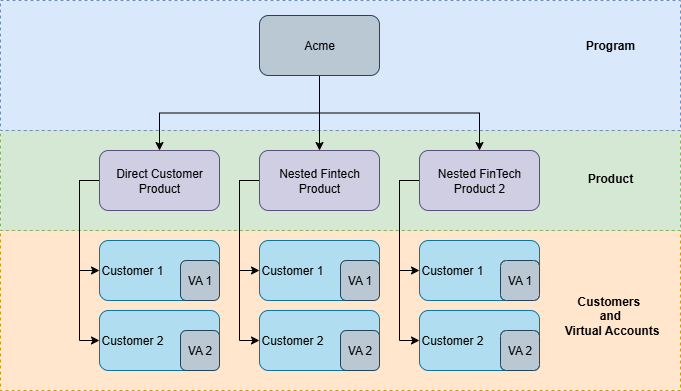Programs and Products
Summary
In the Braid Payment Core, the Program/Product acts as the overarching structure that connects financial institutions, fintech partners, and their customers. It provides a unified framework for managing customer relationships and ledger hierarchy. The structure is specifically designed to handle multiple levels of fintech partnerships while maintaining the visibility of customer information and account structure.
Program: A Program is the umbrella under which all of your products and customer accounts are created. The program can reflect a FBO account and all the virtual account balance will add up to the program balance. As a Fintech, you might have one or more Programs.
Product: A Product is a subset within the Program. This represents a group of customer accounts that share the same attributes. It can be a sub entity that has its own customers or it can be a different product offerings that needs to to be grouped together. The product can reflect a (sub) FBO account and all the virtual account balance will add up to the product balance. A product can define various features, including account types (e.g., checking, savings), customer types, account number formats, KYC flow, transaction limits, and fees.
Virtual Account: Under each product, you have the Customer entity with Virtual Accounts. These are essentially the accounts your customers will interact with. Each virtual account has its own ledger and balance. The Virtual Account number are tied to the customer and directly addressable by Payment rails like FedWire or FedACH. The customer name will be used as sender/recipient in the payment transactions.
NOTE: Program and Product will needs to be approved by the Financial Institution.

Fig. 3 Program and Product
Updated 3 months ago
